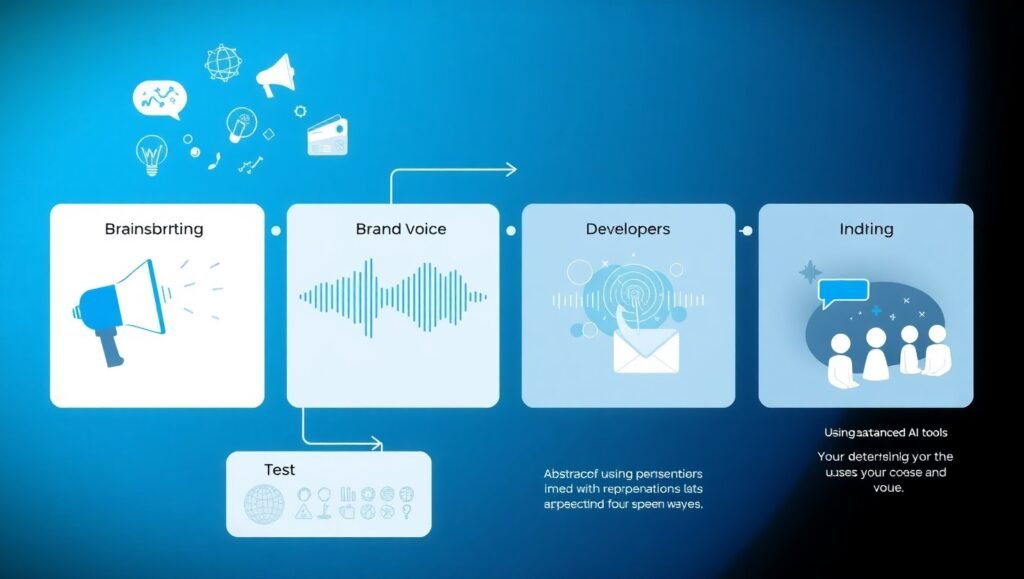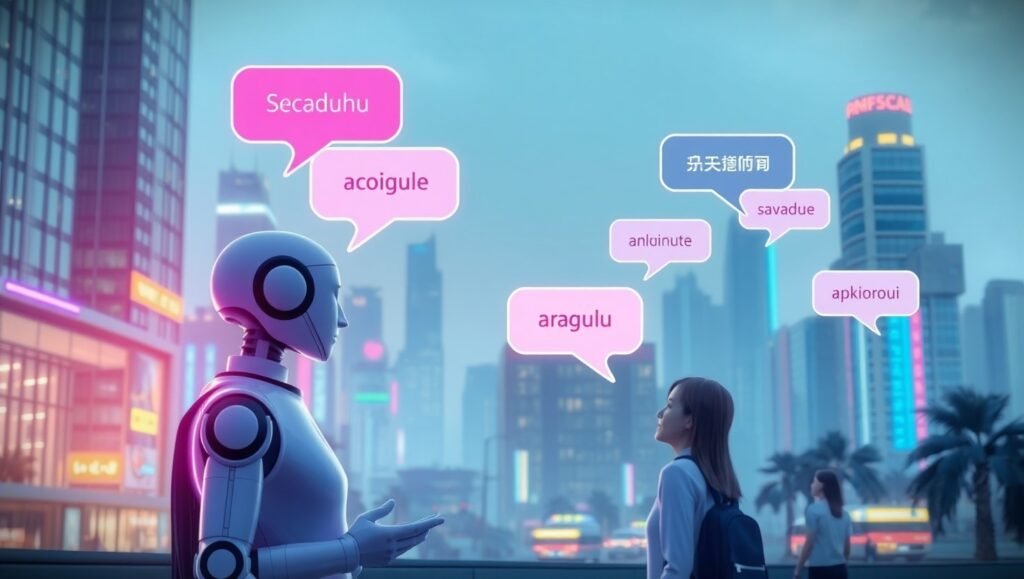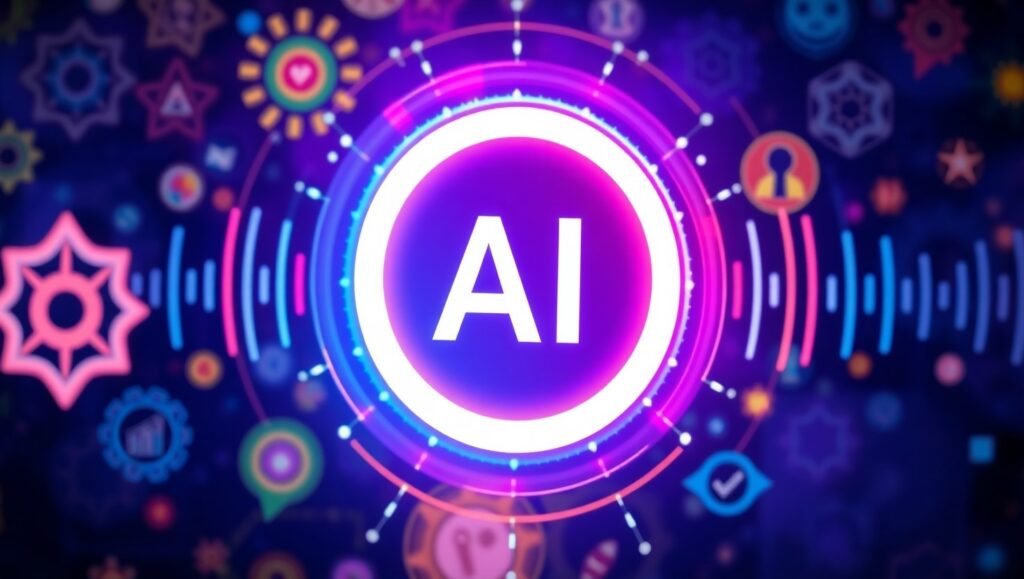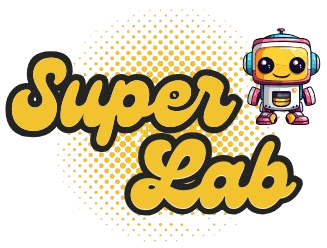Table of Contents
Introduction – Powerful Strategies To Start Your Virtual Assistant Business
Powerful Strategies To Start Your Virtual Assistant Business – The voice of a virtual assistant is no longer just a utilitarian feature—it’s the core of a brand’s identity. Businesses across industries are leveraging customized AI voices to enhance customer engagement, improve user experience, and solidify brand loyalty. With advancements in natural language processing (NLP) and voice synthesis, virtual assistant voice development has become both an art and a science.
In this article, we’ll explore the intricate process of creating AI voices tailored for virtual assistants and chatbots, highlight the benefits for businesses, and provide actionable insights into voice customization.
Why Voice Matters: The Role of AI in Brand Identity
In the digital era, your virtual assistant’s voice is your brand’s first impression. Think of it as the audible equivalent of your company logo—instantly recognizable and uniquely yours. The right AI voice creates a memorable user experience, builds trust, and reinforces your company’s personality.
Custom AI voices ensure consistency in tone and style, which is crucial for businesses aiming to establish a strong brand identity. For example, a financial institution might opt for a professional and reassuring voice, while an entertainment platform might prefer an energetic and approachable tone.
Powerful Strategies To Start Your Virtual Assistant Business

The Technology Behind Custom AI Voices
Developing AI voices involves cutting-edge technologies like machine learning, deep learning, and text-to-speech (TTS) engines. These systems analyze vast datasets of human speech to synthesize voices that sound natural and emotive.
Speech synthesis models, such as WaveNet or Tacotron, use advanced neural networks to replicate the nuances of pitch, tone, and rhythm. By integrating phonetic analysis and user feedback, developers can fine-tune these voices to align with specific business goals and customer expectations.
Powerful Strategies To Start Your Virtual Assistant Business

Steps to Developing a Customized AI Voice
- Define Your Brand’s Voice Personality
The first step is identifying your brand’s core attributes and determining how these should translate into a voice. Is your brand confident and authoritative or warm and friendly? Once this is clear, developers can craft a tone of voice that resonates with your target audience. - Collect and Analyze Data
Developers gather high-quality voice recordings to train the AI model. The data must be diverse and contextually relevant to ensure the synthesized voice performs well across different scenarios. - Build and Test the Voice Model
Using AI algorithms, developers create a voice model that mirrors the desired characteristics. Rigorous testing follows, ensuring the voice is clear, engaging, and responsive across multiple use cases. - Integrate Feedback and Optimize
Feedback from beta users is invaluable for refining the AI voice. By iterating on customer insights, businesses can ensure their virtual assistant delivers an optimal experience.
Powerful Strategies To Start Your Virtual Assistant Business

Benefits of Custom AI Voices for Businesses
Custom AI voices go beyond aesthetics—they deliver tangible business results. Firstly, they enhance customer engagement by creating a conversational experience that feels personal and relatable. This fosters deeper connections between brands and customers.
Secondly, a unique voice differentiates your business from competitors. In crowded markets, standing out is essential, and a custom AI voice offers a distinct edge. Moreover, custom voices can streamline operations by handling customer queries efficiently, freeing up human resources for complex tasks.
Powerful Strategies To Start Your Virtual Assistant Business
Challenges in Voice Development and How to Overcome Them
Despite its advantages, creating custom AI voices isn’t without challenges. Ensuring voice authenticity and avoiding monotony can be tricky, especially when dealing with large datasets. Businesses also face the task of balancing naturalness with efficiency.
Powerful Strategies To Start Your Virtual Assistant Business
To overcome these hurdles, companies should collaborate with experienced developers and leverage AI platforms specializing in voice synthesis. Investing in user testing and continual optimization can also mitigate risks and ensure the voice remains relevant and effective.
Powerful Strategies To Start Your Virtual Assistant Business

Future Trends in Virtual Assistant Voice Development
As AI technology evolves, virtual assistant voices will become even more advanced. Hyper-realistic speech synthesis and emotional intelligence are emerging trends poised to revolutionize the field. Imagine a virtual assistant capable of detecting customer emotions and adjusting its tone accordingly.
Furthermore, multilingual and accent-adaptive voices will enable businesses to cater to global audiences seamlessly. This level of personalization will redefine how businesses interact with customers, making virtual assistants indispensable tools.
Powerful Strategies To Start Your Virtual Assistant Business
Conclusion: Bringing Your Brand to Life Through Voice
Investing in custom AI voice development is no longer optional for businesses aiming to stay competitive. A well-crafted AI voice embodies your brand values, improves user experience, and drives customer loyalty. By embracing the latest technologies and trends, you can create a virtual assistant that not only speaks but also connects.
Powerful Strategies To Start Your Virtual Assistant Business
FAQ About AI Virtual Assistant
What is the employment outlook on virtual assistants?
The employment outlook for virtual assistants is positive, with demand growing as more businesses shift to remote operations. Companies value cost-effective, flexible support for administrative, marketing, and specialized tasks. With advancements in technology and digital communication, the future is promising for VAs who continually update their skills and adapt to new tools.
Powerful Strategies To Start Your Virtual Assistant Business
How do I find clients as a virtual assistant?
Finding clients involves building a strong online presence through a professional website, social media, and freelance platforms like Upwork or Freelancer. Networking in industry-specific groups, asking for referrals, and optimizing content with targeted SEO keywords can improve your online ranking. Consistent engagement and showcasing a solid portfolio are key to attracting the right clients.
Powerful Strategies To Start Your Virtual Assistant Business
How can I track virtual assistant hours effectively?
Tracking hours can be streamlined with time management tools such as Toggl, Harvest, or Clockify. These tools log working hours, tasks, and generate reports that simplify invoicing and accountability. Alternatively, you can use spreadsheets for manual tracking. Agree with your clients on the preferred method and ensure transparency in billing and task progress.
Powerful Strategies To Start Your Virtual Assistant Business
What is a virtual medical assistant and what do they do?
A virtual medical assistant supports healthcare providers by handling tasks such as scheduling, patient record management, billing, and communications. They work remotely using specialized software to maintain compliance with healthcare regulations. Their role is critical in ensuring that medical offices run efficiently while reducing administrative burdens.
Powerful Strategies To Start Your Virtual Assistant Business
How much does Athena virtual assistant cost?
Athena virtual assistant pricing varies based on the service package and client needs. Costs may be structured on an hourly or subscription basis, so checking the official Athena website or contacting their sales team is advisable for the most current rates. Compare features and reviews to determine if the service meets your business requirements.
Are virtual assistants in demand in today’s market?
Yes, virtual assistants are in high demand as businesses embrace remote work and digital solutions. Their ability to handle administrative, technical, and specialized tasks allows companies to reduce costs and boost productivity. With the growth of e-commerce and digital marketing, both startups and established organizations are increasingly relying on VAs for flexible support.
Powerful Strategies To Start Your Virtual Assistant Business
How do I start a virtual assistant business?
Start by defining your niche and services, then create a comprehensive business plan. Establish a professional website, build social media profiles, and use SEO strategies to improve online visibility. Invest in relevant tools and training, and network through industry forums and virtual events. Legal registration and clear pricing structures are also important for long-term success.
Powerful Strategies To Start Your Virtual Assistant Business
What is the name of Amazon’s virtual assistant?
Amazon’s virtual assistant is known as Alexa. Alexa helps users control smart home devices, play music, access information, and manage daily tasks using voice commands. Its continuous evolution keeps it among the top virtual assistants in the market.
How do I hire a virtual assistant from the Philippines?
Hiring a virtual assistant from the Philippines can be done through freelance sites, dedicated VA agencies, or job boards. Look for candidates with strong English communication skills and reliable internet connectivity. Conduct interviews, request trial tasks, and check references to ensure they fit your business needs while offering cost-effective solutions.
Powerful Strategies To Start Your Virtual Assistant Business
What are the benefits of hiring a virtual assistant?
Hiring a virtual assistant offers cost savings, increased productivity, and flexibility. VAs handle administrative and specialized tasks, allowing you to focus on core business activities. This remote support reduces overhead costs, provides scalable assistance, and brings expertise without the long-term commitment of full-time employees.
How much does a virtual assistant cost?
The cost of a virtual assistant depends on their experience, specialization, and the services required. Rates generally range from $10 to $50 per hour, with some professionals offering package deals. Clarify billing methods—whether hourly, per project, or via retainer—before hiring to ensure the arrangement fits your budget and business needs.
Why hire a virtual assistant for your business?
A virtual assistant can boost your business efficiency by managing administrative tasks, scheduling, and customer support. This delegation frees up time for strategic planning and growth initiatives. VAs offer flexibility, specialized skills, and cost-effective support that can scale with your business, allowing you to focus on core competencies and improve overall productivity.
How much are virtual assistants typically charged?
Virtual assistant rates vary based on skill level, experience, and location. Entry-level VAs might charge between $10 and $20 per hour, while seasoned professionals may charge $30 to $50 or more. Specialized tasks or industries—like virtual medical assistance—can also command higher fees. Always review a clear breakdown of pricing before engaging services.
Powerful Strategies To Start Your Virtual Assistant Business
How do virtual assistants charge for their services?
Virtual assistants typically charge by the hour, per project, or via retainer packages. Hourly rates depend on expertise and the nature of tasks, while project-based fees are set by the scope and duration of work. Some VAs offer monthly retainers for ongoing support. Discuss billing details upfront to establish clear expectations and transparency.
How do I start a virtual assistant business if I’m new?
Begin by identifying your strengths and researching market needs. Develop a simple business plan that outlines your services, target audience, and pricing. Create an online presence with a website and social media profiles, and consider taking introductory courses or obtaining certifications. Use freelance platforms to gain initial projects and build a portfolio that demonstrates your abilities.
Powerful Strategies To Start Your Virtual Assistant Business
How much is a virtual assistant service worth?
The value of a virtual assistant service is measured by increased productivity, cost savings, and the ability to delegate time-consuming tasks. A professional VA can streamline operations and allow you to focus on strategic business growth. The service’s worth varies based on the quality of work, specialized skills, and the impact on your overall business efficiency.
How to effectively use a virtual assistant?
To maximize a virtual assistant’s benefits, clearly define tasks and expectations. Use communication tools and project management software to track progress and deadlines. Provide detailed instructions and regular feedback to ensure work aligns with your business goals. Establishing structured workflows and setting realistic targets will enhance productivity and foster a strong working relationship.
Powerful Strategies To Start Your Virtual Assistant Business
What factors determine how much virtual assistants charge?
Virtual assistant rates are influenced by experience, specialization, geographic location, and task complexity. Additional factors include proficiency in specific software, niche skills (such as virtual medical assistance), and market demand. Assess these factors when setting a budget or pricing your services to ensure alignment with the value provided and industry standards.
Is a virtual assistant a good side hustle opportunity?
Yes, many find virtual assistance a viable side hustle due to its flexibility and low startup costs. It allows individuals to leverage administrative, technical, or creative skills on a part-time basis. As demand grows for remote support, starting as a side hustle can evolve into a full-time career, offering additional income without significant initial investment.
How much does a virtual assistant charge per hour?
Virtual assistant hourly rates typically range from $10 to $50, depending on expertise, location, and service scope. Entry-level assistants tend to charge on the lower end, while experienced or specialized VAs may charge higher fees. Always confirm the rate and any additional costs before hiring to ensure the arrangement meets your budget requirements.
Powerful Strategies To Start Your Virtual Assistant Business
How much can a virtual assistant make working full-time?
Full-time virtual assistants can earn between $30,000 and $70,000 annually, though earnings depend on skills, experience, and client base. Specialized VAs or those working with multiple clients may earn more. Continuous professional development and expanding service offerings can also lead to higher income over time.
Powerful Strategies To Start Your Virtual Assistant Business
What are the key steps to hiring a virtual assistant?
Begin by outlining the tasks you need help with and drafting a detailed job description. Use freelance platforms or VA agencies to shortlist candidates, then screen them through interviews and trial tasks. Verify their experience, reviews, and references. Once you find the right match, agree on terms including rates, working hours, and communication channels to establish a smooth working relationship.
Powerful Strategies To Start Your Virtual Assistant Business
How can I find virtual assistant jobs online?
Search for virtual assistant opportunities on freelance platforms like Upwork, Freelancer, and specialized job boards such as Remote.co or FlexJobs. Create a compelling profile that highlights your skills and past projects, and optimize it with relevant keywords. Networking on LinkedIn and joining VA groups can also help uncover job opportunities and connect with potential clients.
Powerful Strategies To Start Your Virtual Assistant Business
What is the best free virtual assistant for beginners?
For beginners, free tools like Google Assistant, Microsoft Cortana, or Amazon Alexa offer robust features including reminders, scheduling, and basic task management. These platforms are user-friendly, integrate with various apps, and can help streamline daily operations without additional costs. Experiment with these options to determine which best supports your workflow before upgrading to premium services.
Powerful Strategies To Start Your Virtual Assistant Business
Where can I find a reliable virtual assistant?
Reliable virtual assistants can be found on reputable freelance platforms such as Upwork, Fiverr, and Freelancer, as well as specialized VA agencies. Look for professionals with positive reviews, verified work histories, and clear portfolios. Personal recommendations and trial projects are also valuable methods to ensure you select a candidate who aligns with your business needs.
Powerful Strategies To Start Your Virtual Assistant Business
Where should I look to find a virtual assistant?
Consider starting your search on popular freelance marketplaces, VA agencies, and professional networking sites like LinkedIn. Online job boards and social media groups dedicated to remote work can also connect you with experienced virtual assistants. Verify candidates through reviews, references, and sample work to ensure they meet your expectations.
Powerful Strategies To Start Your Virtual Assistant Business
What is the best free virtual assistant tool available?
Free virtual assistant tools such as Google Assistant, Microsoft Cortana, and Amazon Alexa are popular for managing daily tasks like scheduling, reminders, and basic inquiries. These tools offer voice-command features, seamless app integration, and user-friendly interfaces, making them ideal for beginners or small business owners looking to streamline operations without extra cost.
Powerful Strategies To Start Your Virtual Assistant Business
How do I become a virtual assistant with little experience?
Start by identifying transferable skills and taking online courses to enhance your capabilities. Build a basic portfolio by taking on volunteer or small freelance projects. Register on freelance platforms like Upwork or Fiverr and gradually build your reputation with positive reviews. Networking, continuous learning, and obtaining certifications will help you grow your credibility and expand your opportunities as a virtual assistant.
Powerful Strategies To Start Your Virtual Assistant Business
What skills are required to become a successful virtual assistant?
Successful virtual assistants need strong communication, organization, and time management skills. Proficiency in digital tools such as office software, social media, and project management platforms is crucial. Adaptability, problem-solving, and attention to detail further enhance service quality. Continuous skill development and learning new technologies help maintain competitiveness in this evolving industry.
Powerful Strategies To Start Your Virtual Assistant Business
How can I improve my virtual assistant business to rank on Google?
Focus on search engine optimization by integrating relevant keywords in your website content, blog posts, and meta tags. Publish quality, informative content regularly and build backlinks through guest posting and partnerships. Use analytics tools to monitor performance, and engage actively on social media. Client testimonials, case studies, and a mobile-friendly website further enhance credibility and improve your Google ranking.
Powerful Strategies To Start Your Virtual Assistant Business








Pingback: US Stock Market Crash - Powerful Strategies To Survive & Thrive During Crash 2025📉🔥